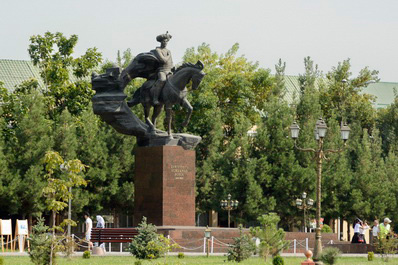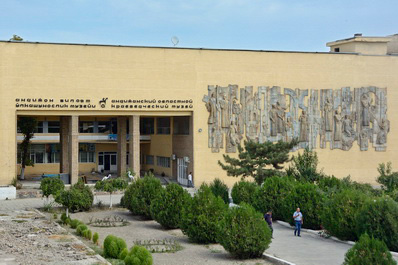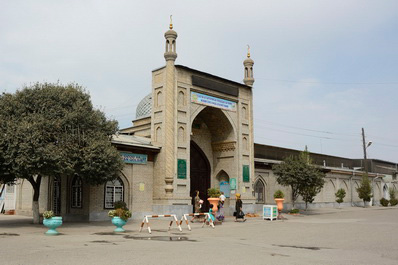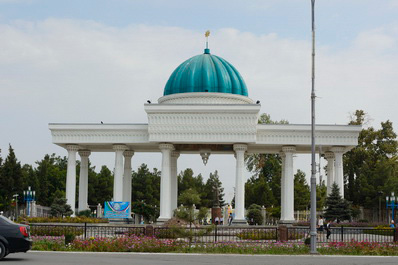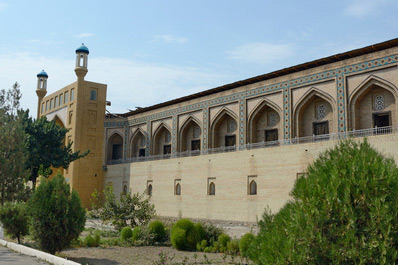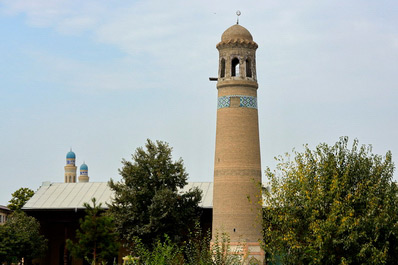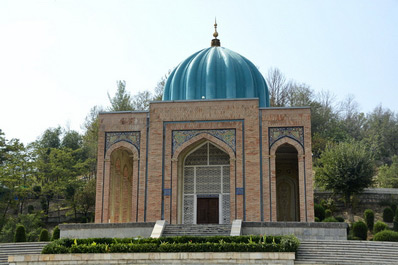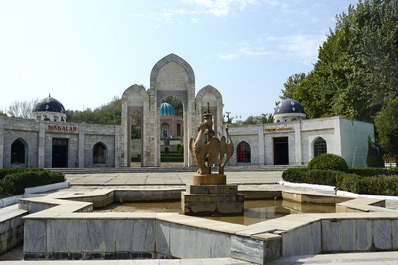Guide to Andijan
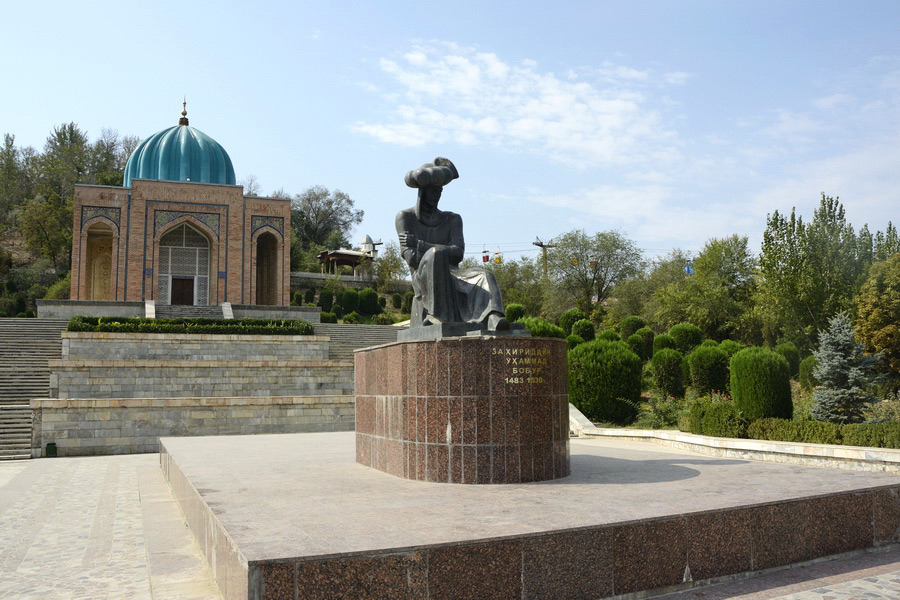
Former names: Andukan, Andigan
Founded: V-IV centuries B.C.
Altitude: 500 m
Postal code: 1701XX
Official language: Uzbek
Resident nationalities: Uzbeks, Kyrgyz, Tajiks, Russians, Iranians and others.
Time zone: UTC+5
International telephone code: +998 74
Vehicle code: 60-69
Zahiriddin Muhammad Babur, a renowned military commander, statesman, poet, and the great-grandson of Amir Temur, was born in the ancient city of Andijan. In his memoirs, "Babur-name," he affectionately described his hometown, stating, "One hasn't truly lived if they haven't seen Andijan, and during one's travels, they should fondly recall it." Today, Andijan honors Babur with a university, park, museum, library, and avenue named after him.
In the early 1900s, a catastrophic earthquake struck Andijan, claiming over 4,000 lives and destroying many historic monuments. However, numerous ancient structures still stand proudly today. Geographically, Andijan is about 50 kilometers from the Kyrgyz city of Osh and roughly 250 kilometers from Tashkent in a direct line, but the driving distance stretches to 350 kilometers.
Now, Andijan is home to nearly 450,000 inhabitants. A significant portion of the population is employed in its myriad light, textile, construction, and chemical industries, with the city boasting over 50 such factories and plants.
How to Get to Andijan?
Air travel is the most convenient mode to reach Andijan, with direct flights available from cities like Tashkent, Moscow, St. Petersburg, Omsk, Novosibirsk, and Tyumen.
For those preferring the railways, there's a train service from Tashkent that halts at Kokand and Margilan. Moreover, a train from Khiva also services the region, stopping at notable locations like Bukhara and Samarkand.
Shuttle buses, shared rides, and private taxis from most major Uzbek cities offer an alternative route to Andijan. If you're driving, you can easily navigate to Andijan from nearly any part of the country.
Another route is from the Kyrgyz city of Osh, a mere 50 kilometers away. Including border-crossing formalities, the journey should take just over two hours.
Is Andijan Safe?
Andijan boasts a reputation as a safe city, bolstered by a significant law enforcement presence and the laid-back, friendly nature of its locals. Nevertheless, visitors should always exercise common sense: keep an eye on your belongings and adhere to basic safety precautions.
Brief History of Andijan
Andijan, nestled in the Fergana region, isn't just one of the oldest cities in the vicinity but stands as a testament to ancient civilization globally. While the first documented references to Andijan trace back to the 9th century, historians and archaeological findings suggest the city's foundation was laid around the 5th-4th centuries BC, making it over 2,500 years old. With the famed Silk Road caravans meandering close by, Andijan saw a blossoming of pottery arts as early as the 2nd century BC. Moreover, its revered argamak horses found eager buyers as far away as China.
The etymology of "Andijan" is fascinating. Legend suggests "andi" was its founder's name, and "zhan" translates to soul. However, many historians opine that the city evolved from the ancient Andukan, inhabited by the Andi tribe, predominantly Hindus.
Recent archaeological collaborations between Uzbek and Chinese experts have unearthed Mingtepa near Andijan to be the site of Ershi, the capital city of the ancient Dawan state. Established in the 3rd century BC and dissolving around the 5th century AD, the finds from the region include remnants of gates, ancient burial grounds, and craft workshops.
Throughout history, Andijan shifted allegiances, with the Temurids holding sway the longest, from the 14th to 16th centuries. This period marked the city's golden age. The later influx of settlers from the Russian Empire in the late 19th century infused Andijan with diverse architectural styles, and some of these structures endure today.
Andijan Sights & Attractions
Over 50 historical edifices in Andijan proudly feature on Uzbekistan's heritage list. Key highlights include ancient mahallas like Dehkonobod and Sarvontepa. The 16th-century Ark ichi madrassah, the 19th-century Jami complex, mosques, and sacred Islamic sites beckon explorers. Pilgrims often frequent spots such as the 10th-century Bobo Tavakkal and the 9th-century Mirpustun Ota.
History enthusiasts will relish ancient sites in the Andijan region, like Deva-tepu and Yapalak-tepu, as well as the evocative Shark yulduzi hill. The aesthetically splendid Ahmadbek Khoja's hotel, no longer an inn, houses artisans and boasts a century-old decor featuring intricate woodwork and murals.
Intriguingly, Andijan hosts an Orthodox church, consecrated in the mid-20th century in memory of All Saints. Meanwhile, Bogishamol Park, while not historically significant, remains a crowd favorite for its aerial tramway, offering breathtaking views from its stations, stretching approximately 1.6 to 2 kilometers.
Museums of Andijan
To truly immerse oneself in Andijan's rich tapestry, the "Babur and World Heritage" house museum, Museum of Local Lore, Museum of "Literature and Art", Jami memorial complex, Kal'a fortress-museum, and archaeological gems like Teshik-tash, Mingtepa, and Ershi are a must-visit. The city also boasts the Babur house-museum, Chulpan memorial museum, military history exhibitions, and the railway workers' museum, among others.
Theaters of Andijan
Andijan is home to six theaters, five of which operate year-round. However, the Andijan Green Theater located in the Park of Culture and Recreation comes to life only during the summer months. While most performances are in the Uzbek language, visitors seeking a taste of Andijan's vibrant arts scene should definitely check out the Andijan Babur Drama and Comedy Theater, the Music Theater, the Bakirov Youth Theater, the Lola Regional Puppet Theater, and the whimsical Buratino Children's Theater.
Shopping in Andijan
When in Andijan, indulge in the rich textiles the city has to offer, like the traditional Uzbek fabrics: satin and adras. Even if you're not into ethnic clothing, consider picking up fabric swatches or ready-made table runners to add a splash of color to your dining table.
Shakhrikhan, within the Andijan Province, is a haven for artisans specializing in knives, skullcaps, chapans (traditional robes), and exquisite gold embroidery. A designated artisan center lets you explore these crafts all in one place.
No visit to Andijan is complete without savoring or taking home their signature openwork fried flatbreads, known as katlama. Ensure you pack them in high, wide dishes available locally, as these delicate "petals" can easily break.
Food in Andijan
The Andijan region is synonymous with katlama, a fried flatbread that comes with various fillings like meat or onions. A unique treat here is the rose-shaped katlama, made with numerous thin layers, which is a regional specialty.
Interestingly, Andijan was among the first to introduce square flatbreads, a favorite among locals and visitors alike.
Dolma, a concoction of meat and rice wrapped in grape leaves, holds a special place in Andijan's culinary repertoire. It's not just a standalone dish; locals love adding it to pilaf, resulting in the distinctive kavatok palov.
Speaking of pilaf, Andijan boasts its own version made from the dense "Devzira" rice, adding a distinct flavor to the dish. Known as Chaykhan pilaf, its preparation method also sets it apart from the more traditional wedding pilaf.
Transportation in Andijan
In Andijan, cars rule the road, both for locals and visitors. Public transport consists mainly of buses, with "Damas" shuttle buses available for quick hops around town.
Best Time to Visit Andijan
Andijan basks in warmth for a majority of the year. If you love the heat, summer is the perfect time. However, those seeking a milder climate can opt for winter when the tourist crowds thin out. Ideally, April, May, September, and October offer the most pleasant climate for exploring Andijan.


